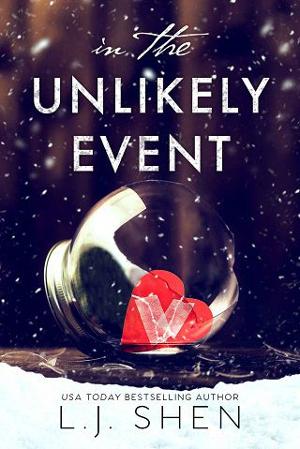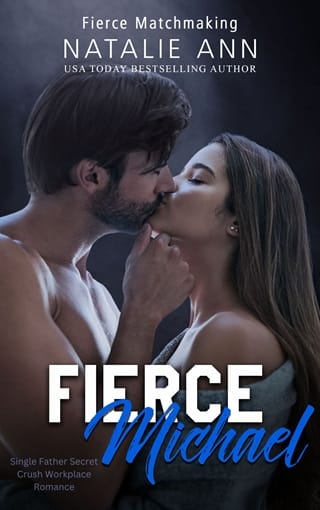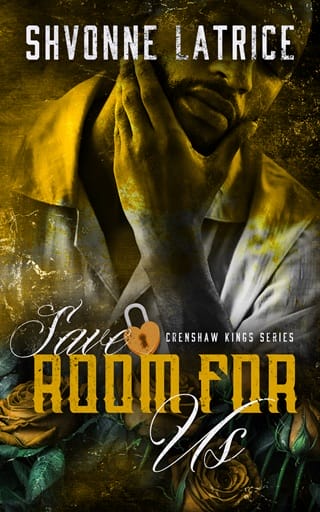Preface
Preface
Disclaimers:
This book is a DUET.
The story in Book One ‘Saber Blade’ concludes in - Book Two ‘Saber Throne’.
Also, Australian, American, and British English have different spellings of some words, e.g., ‘colour’ (British/Australian) VS ‘color’ (American).
Sky Gold has used Australian/British English and followed the spelling, style, and punctuation conventions listed in the online version of the Macquarie dictionary.
She has also taken the liberty of using words that encapsulate her world-building. The choice of words used is at the author’s discretion.
Glossary: The Kaɪˈmɪərə of Katánē
- Kagṣān- the Sky Eagle, the mythical guardian of Katánē, the ‘giver of favourable wind’.
The Kíríga - the King of the Katánē, the bearer of the hawkstone.
The Král-In-Waiting - the King not yet crowned.
The Kainôs - the new rebel army made up of Sābər Hawks and Krypós Eagles.
The Sābər Hawks - also known as Sābər Hunters, are the Imperial army and military wing, the Kaɪˈmɪəric shape-shifting war hawks who respond to outside threats with armed force.
The Krypós Eagles - the sharp-beaked gryphon-like hounds with eagle heads and leonine bodies who are the closest guards of the Kíríga.
The Klós K’lia - The army’s krest, spearhead, and sābər tip in battle. They are the finest and elite of the Imperial Sābər Hawks and Krypós Eagles.
The Lesser Krypós Gyrfalcons - the planet’s internal force that polices the city, keeps the peace and investigates crime.
SābərsKoyas - sets of feathered plumes with serrated edges wielded by the Sābər Hawks and Krypós eagles that can transform into swords and daggers.
The Kíndunas - the Kainôs army commanders.
The Kɛstrəls - the old King’s army, composed of fanatics, old guards, retired officers and ex-warriors.
The Kujāa - cadet warriors.
The Kānāri Horns - the Kainôs’ army orchestra.
The Känon and Kāugurs are the priests and diviners of Katánē, the curse breakers and transmitters of blessings. They are also the ‘diviners of the birds’ and the will of Kagṣān.
The Kəthi - for hire koya and sword fighters, most of them ex-Kɛstrəl and Krypós warriors. Their most celebrated arena fighters are called the Kavaliers.
The Kísímí - the fight and sword masters, paid by and maintained by most self-respecting noble and wealthy eyries.
The Kəˈnerē - the high society, the royal and high borns and eyries of Katánē.
The Kubaí - the ageing ritual elders who served in the old King’s council, the Kíama.
The S’kiə Council - the new advisory of wisdom formed after Tempest Light’s death, which includes diverse members from all walks of Katánian life.
The Kírkos - the merchant bourgeoisie of business owners, investors, and entrepreneurs.
The Arokí - the witchers that are neither female nor male, the curse bringers.
The Känˌdôr - the vulture tribes of the outer plains.
The Kākāpō - the artisans and creatives.
The Kwāāa - an organised group of off-colour entertainers, activists, and sometimes fantasists who like to stir up trouble for the sake of it.
The Kāzin - the herders and labourers.
The Khōras are the hunters of the former Kíríga, those who carried out his dark and evil will. They were created using dark kätu supplied by the Arokí.
The Khārpies - half falcon-half women who ride the storm winds and are known for terrorising mortals and their enemies.
The K’Chäwi - the personal sorcerers and healers of a tribe and clan.
The Kôrmərənt - the efficient and expert administrators.
Il Tikirri- foreign clans from beyond the veil who’ve formed shaky alliances with the Katánē.
The Kä’avi - the collective noun that describes the combined kəsts, tribes and people of Katánē.
The Várkolák - blood-sucking, mythical beings.
Katánópólis(short form Kós) - capital of Katánē.
Everyday Words
- Kíríga- King.
Kwenə- Queen.
Kíntí- Aunt.
Khany’s- ‘queen of light’, an endearment a lover gives.
Naam- ‘yes (also used across Pegasi).
Nada- No.
Sawa- OK, fine, all good.
De nada- Never mind, no mind, don’t worry.
Sante- thank you.
Kirḗnē- peace.
Ka- soul.
Fokk- (what you think it means)
Drákons- dragons.
Avifauna- winged creatures.
Okto- old, dead, long gone.
Kíjí- villages where families and tribes exist.
Kəsts- the close-knit family-based clans.
Eyries- the homes within which the kəsts live.
Kemí, kízaand kσχύςíkan - the trinity of breath, dark and light elements.
Kízakan- a malodorous, infected evil element spun from kíza.
Kätu- magic, neither good nor bad.
íkantations- spell working and manipulation of kätu and íkan magic.
íkhara- the fight house, the core of flight, the place of blades and wings - the space and place for immersive sābərkoya learning, experiential training and meditation. Also, the spaces are set aside for koya, kapo, and sword fight training.
Kíota- an aerial platform and palace held up by an ancient levitation kätu that is the nesting place of Kings.
Kapo- a form of martial arts practice across Pegasi.
SHärdether - an ancient vaporous, diaphanous and sentient energy unique to the Shotelai.
Metsai- the impervious, form and shape-bending armour suit worn by Shotelai warriors.
Nýkhta- night, anything that has to do with darkness, shadow, the unseen, the unknown.
Kíwanja- the air space set aside for aerial battles and skirmishes.
Krustallosis a crystalline material used in building works, walls, and tools.
Rachís- a word to describe giant wings.
Aerie- a winged collection of flying hawks or eagles.
Kantína- a bar/pub.
Kírorerô- the omens of potent dark power and prophecy wielded by the Arokí.
Xkénos- a foreigner, anyone not born in Katánē.
Kwɪl- a feathered pinna/pen.
Káján- a regular army tent.
Kälajan- the royal King’s or commanding general’s tent.
Derecho- storm, a squall.
Tikό- a muscle relaxant and pain medication used by the Shotelai.
Bizna- business.
Klaw- a leafy green plant containing two main stimulant drugs that speed up mind and body processes.
Koya- a weapon that is a cross between a sword and spear, found in the head krests of the Katánians.
Krest- iridescent feathers growing out of Katánian skulls that signify their kəsts and eyries.
Kína- name.
Kusudi- a gentle form of mind control wielded by the hawkstone wearer.
Khaboob/khamsim/ derecho- cyclonic storms that form over the planet during the squall season.
Skoltr- skull.
Main Characters
- Killen - The Kíríga - the rightful King of the Katánē, the Titan of Raptors, the wearer of the hawkstone, seen as a hero to some and the usurper by others. Killen is also seen as a reincarnation of the Thunder Eagle, a wind deity in the form of the great bird. His Kaɪˈmɪərə Sābər Hunter moniker is ‘Storm Pale’.
Sana’a - the much feared Switchblade … a ‘shikari’ - a SHärd-blader, a slayer of drákons and a dagger woman - with an oath to fulfil and a mind to kill a King.
Koreau, the peace giver, is the highest Känon of Katánē, representing wisdom and light. He lives on the far desolate side of the planet in a giant ash tree, also known as the tree of knowledge, the universe or fate. He can change into whatever avifauna form he chooses. Beside him sits his wife, K’Ilia, a gyrfalcon. The flapping of his giant eagle’s wings is believed to have caused the fierce khaboob storms on the planet.
Kultur - the senior Kāugur diviner to the Kíríga, his family and the senior Kaɪˈmɪərə command.
Kaxim is Killen’s First Armourer, an imperial Imperial Krypós warrior whose hunter moniker is ‘Sky Ash’. He is also the interim Commander of the elite Kaɪˈmɪərə Hunters and Kainôs Katánē Army and an imperial Kaldean magus with an excellent aptitude for systems and numbers who can tell by intuition what will happen from systems that stump most.
Kione is a Killen’s Second Armourer and a Golden Krypós Eagle maleficus enchanter. His hunter moniker is ‘Night Frost’. He is quick, can see five seconds into the future, and has an aureolin cobalt yellow/gold feather mane. He is unnaturally sexually attractive, and his irresistibility makes women throw themselves at him.
The Kaɪˈmɪərə Krests - Katánē’s Class Structure
- The Kəˈnerē are Katánē’s high class and kəst, identified by their sarcoline (peachy yellow-beige) wings, pale skin tones, and blue and sarcoline krests. Their plume kätu and oath are simple: protect the family at all costs.
The Kubaí and the Kíama, the ritual elders who serve in the King’s council, sport a muted, austere viridescent hue with grey undertones. The older they become, they take on a glaucous sheen on their wings, a foggy, pale grey-blue frosty hue resembling the powdery coating on plums and grapes.
The Arokí, the witchers and curse bringers, have ebony feathers so black that they absorb nearly 100% of all visible light. Their koya, when concentrated, allows them to connect to ancient deities and raise the dead. Their koya symbolises kätu, intuition, seeing in the dark, developing psychic awareness, and more.
The Khōra - the dark hunters who are Kaɪˈmɪərəs of men and hawks. Hawk-like faces, with skin as crimson as cinnabar. Despite the human-like face, the khōras have three rows of ferocious teeth. Their tails hold koya feathers that are a cubit long and always dealt fatal blows. Additional koya sit on each side of the tail, and some emerge in a krest from the monster’s head. The Khōra shoot their koya from their tail like a bow. They can reach great distances, taking enemies out from a hundred feet. Each koya is a foot long, inflicting fatal damage to all they touch.
The Kírkos - the merchant bourgeoisie of business owners, investors, and entrepreneurs, choose gold. Their koyas transmit new projects, plans and beginnings.
The Kôrmərənt - the efficient and expert administrators - their feathers, which convey dignity and seriousness, come in skobeloff, a dark, muted cyan that conjures up images of deep coastal waters and zaffre, a deep-blue pigment—that comes by roasting cobalt ore.
The Kākāpō —the artisans and creative. They sport krests of amaranth—a reddish-pink hue—and magenta. Their koya imbues humour, silliness, and wise resource use.
The Kwāāa are roguish clowns and entertainers who tend to pick all the colours of the rainbow. A subset of the Kwāāa are the mockingbirds, who remind their fellow Katánians to sing their individual songs and be their unique selves.
The Känˌdôr - the vulture tribes of the outer plains. Their krests are fulvous in hue-browns similar to tawny or butterscotch; this brown-yellow tone is also used to describe the distinct colouration of certain birds, plants, mammals, and fungi.
The Kíkāra, the market traders, herders, and labourers, favour mellow greens and emeralds. Their koya imbue a love for stable home life and the importance of grounding. The Kíkāra can sense the weather changes, their lodestones, and how well the harvest will turn out. When Tempest Light, the previous Kíríga, exploited their lands for materials to build his ships, their koyas shrivelled, harvests failed, and famine fell on certain parts of Katánē.
The Sābər Hawks sport silver, chrome, and gold krests. Their hawk koya hold the kätu of the hunt with vast amounts of energy and protection. Their ability to fly high gives them weather-ruling power to control the formidable forces of wind and smaller storms. Sābər Hawks shed old wings in spring, assuming the appearance of youth with fresh plumage. Their feathers symbolise renewal, protection, and strength.
The Kāugurs - diviners to the Kíríga, his family and the senior Kaɪˈmɪərə command.
Krypós Eagles sport wenge (pronounced ‘wen-geh) coloured wings - an espresso, cinnamon hue that resembles the dark wood of the endangered famous old trees of Katánē. Their wings are imbued with protection and the mysteries of life and death.
The Kugwe - their gray-coloured koya can imbue wisdom and knowledge and help to let go of unwanted feelings, thoughts or negative energy. Some Kugwe are healers, and their koya symbolises healing and restoration.
The Kísímí - the fight and sword masters. Most noble and wealthy houses retain one to strain their sponsored crews and team in the famed kavalier arenas. Their koya are striped and can be used to dispel negative energy so one can focus on the fight.
The K’Chäwi are the personal sorcerers and healers of an eyrie, kəst and clan. They are prophetic birds with healing powers who can choose the dark side or the good.
The Kíbís are librarians and writers. They also guard over ancient kätu mysteries, intuition scripts, books, wisdom, and writing. Their krests are a deep teal ‘atrovirens’ hue that mimics glossy foliage and celadon, a minty jade hue. Their colours remind Katánians to tap into their creative side and gain insight from the universe.
The Kärdins and Koels – the lovers, poets, and singers- have beautiful and vibrant red feathers that symbolise vitality, life, power, and faithful, romantic love that will inspire poetry, music and a stronger connection with meditation.
The Kríffin Phoenix is a rare avifauna, none has been seen alive in centuries. According to legend, it’s wings are coquelicot, a vibrant red-orange and gold hue that shifts and changes in the sun.
Kāugurs, almost always Krypós Eagles, are diviners whose eburnean (ivory-coloured, white with a touch of yellow) and aureolin cobalt/gold feathers hold purification, cleansing, beauty and positive energy. They also hold divination skills. They pay attention to the faint signals across the planet and are the channel between nature and the Katánē people. They can also read the future by the flight and sound of birds, divine the course of the stars, convincingly tell a story of the future and bring it about by getting others to follow them. Those with good intuition about the future bring it to life with storytelling and put people in a state of great excitement so they respond. NB. Some Kāugurs are maleficus, i.e. enchanters or poisoners. Those who have the white and golden mane of charisma are enchanters.
 Fullepub
Fullepub 



